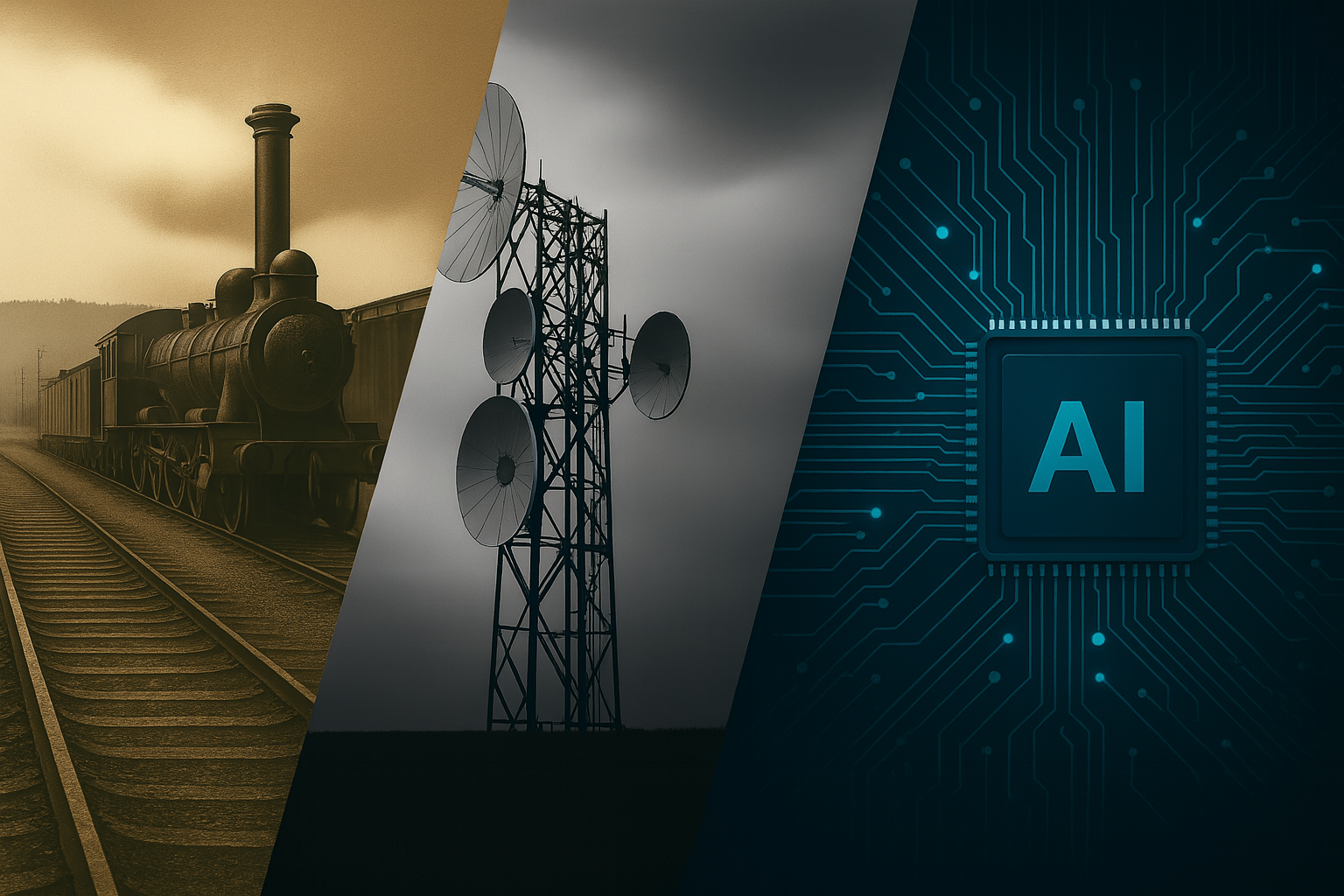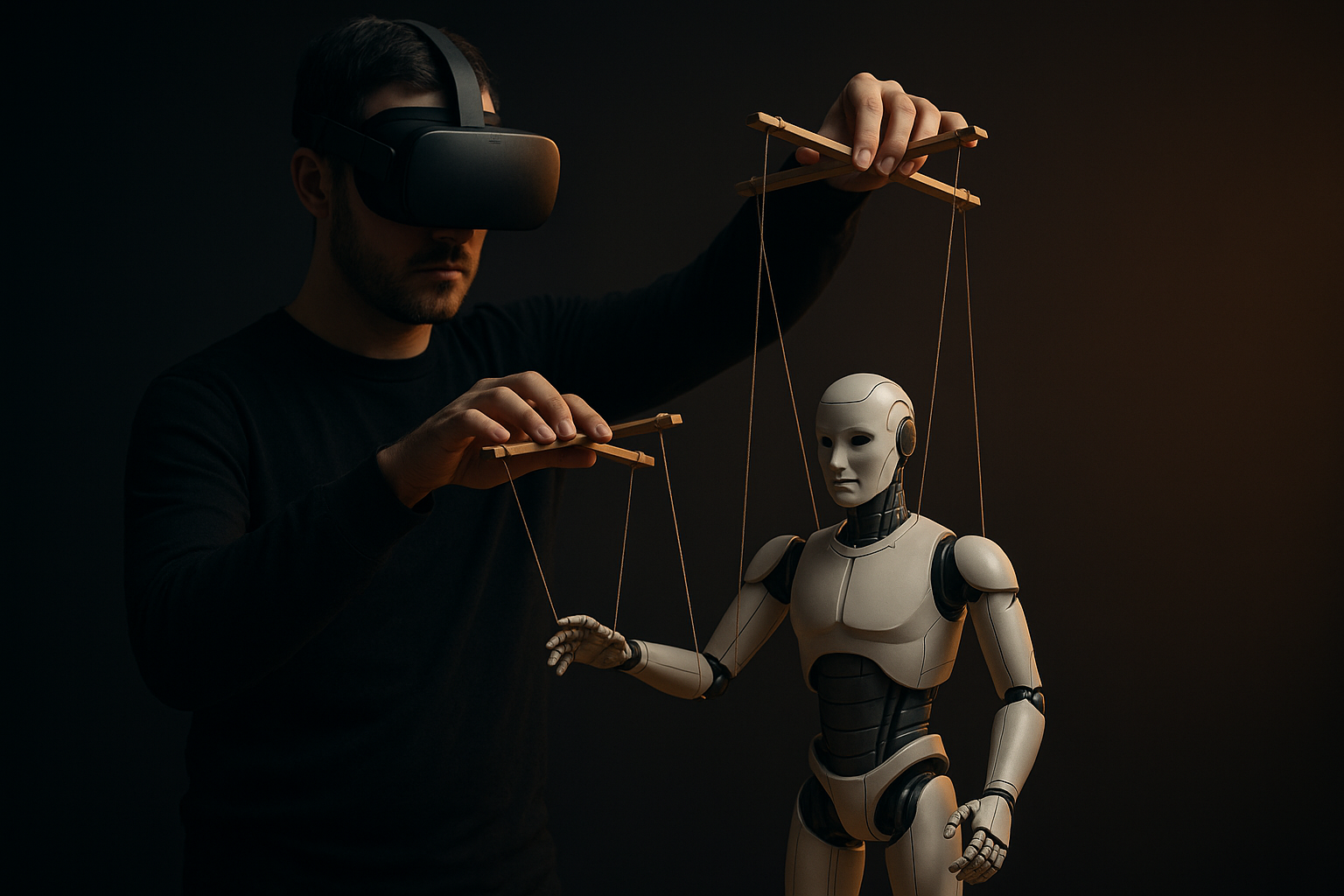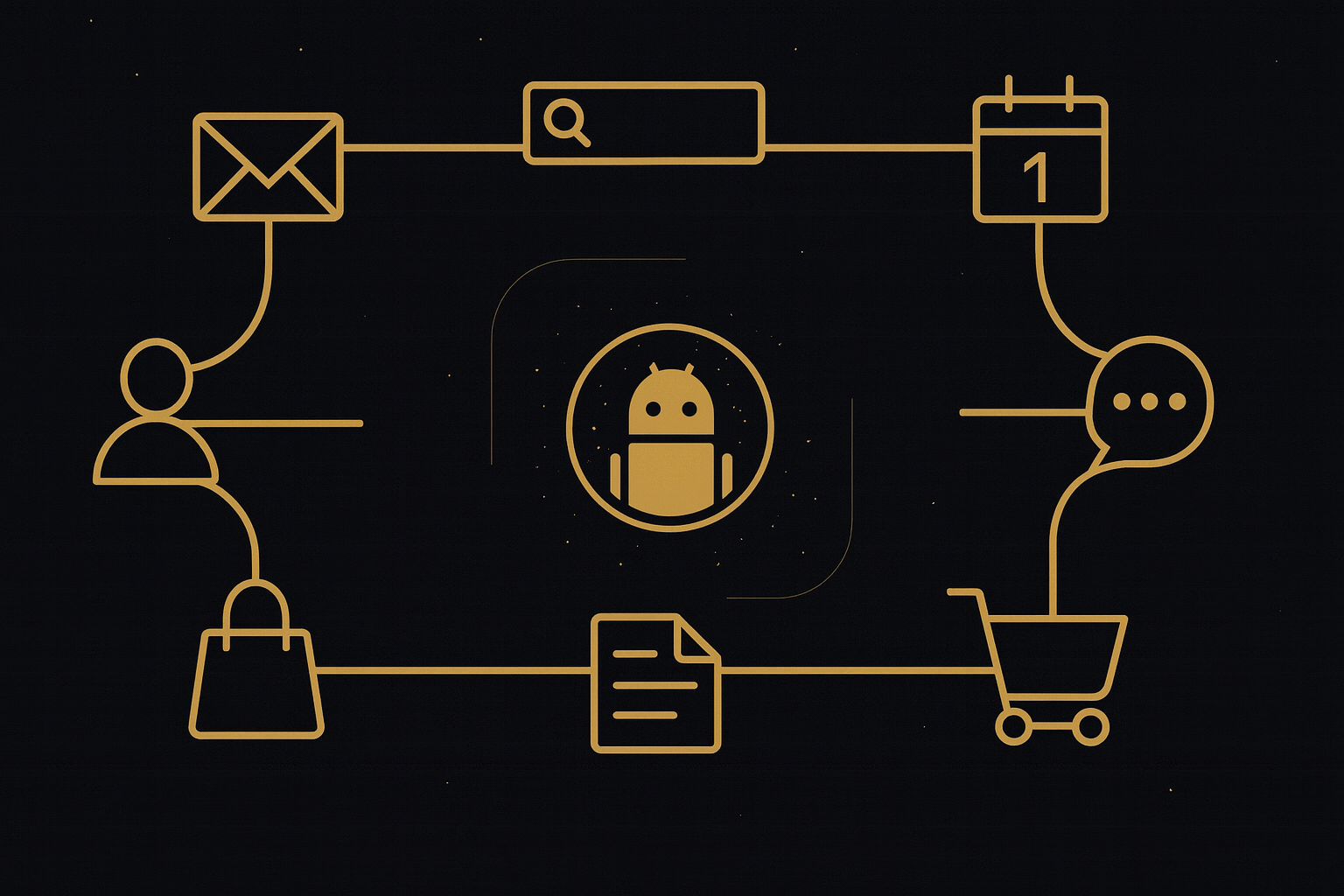THE AI MONEY LOOP: When History Rhymes a Little Too Loudly


Sash Mohapatra

Sash spent 20 years at Microsoft guiding enterprise clients through the cloud revolution and the rise of AI. Now, as the founder of The Rift, he’s on a mission to enhance human potential by helping people develop practical, future-ready AI skills. He writes from a place of deep curiosity, exploring what it means to stay human as machines reshape the world around us.
October 9, 2025






Something has been nagging at me since Bloomberg published their investigation into AI "circular deals" last week. I couldn't shake the feeling that I'd seen this story before, just with different players and different technology. So I did what any curious person does these days: I fell into a research rabbit hole.What I found has me both fascinated and unsettled.
Following the Money in Circles
The story starts simply enough. Nvidia announces a $100 billion investment in OpenAI over ten years. Headlines celebrate it as a massive vote of confidence in artificial intelligence. But when you look closer, something interesting emerges.
OpenAI plans to spend much of that $100 billion buying Nvidia's chips.Think about that for a moment. Company A gives money to Company B, and Company B immediately spends it buying products from Company A. It's like your local coffee shop lending you money and then expecting you to spend it all on their lattes.
But this isn't just one quirky deal. Bloomberg uncovered an entire ecosystem of these arrangements. AMD offered OpenAI the chance to buy 10% of the company through warrants, in exchange for commitments to purchase AMD chips. Oracle signed what may be the largest cloud computing contract in history with OpenAI, worth $300 billion, while simultaneously investing billions in Nvidia hardware to power those very cloud services.The money flows in circles, and everyone seems to be investing in everyone else.
Subscribe now to unlock the full article and gain unlimited access to all premium content.
SubscribeSomething has been nagging at me since Bloomberg published their investigation into AI "circular deals" last week. I couldn't shake the feeling that I'd seen this story before, just with different players and different technology. So I did what any curious person does these days: I fell into a research rabbit hole.What I found has me both fascinated and unsettled.
Following the Money in Circles
The story starts simply enough. Nvidia announces a $100 billion investment in OpenAI over ten years. Headlines celebrate it as a massive vote of confidence in artificial intelligence. But when you look closer, something interesting emerges.
OpenAI plans to spend much of that $100 billion buying Nvidia's chips.Think about that for a moment. Company A gives money to Company B, and Company B immediately spends it buying products from Company A. It's like your local coffee shop lending you money and then expecting you to spend it all on their lattes.
But this isn't just one quirky deal. Bloomberg uncovered an entire ecosystem of these arrangements. AMD offered OpenAI the chance to buy 10% of the company through warrants, in exchange for commitments to purchase AMD chips. Oracle signed what may be the largest cloud computing contract in history with OpenAI, worth $300 billion, while simultaneously investing billions in Nvidia hardware to power those very cloud services.The money flows in circles, and everyone seems to be investing in everyone else.
When I Started Digging Into History
This circular pattern felt familiar, so I started researching historical precedents. What I discovered was both reassuring and surprising. In the 1840s, Britain experienced what historians call "Railway Mania." The entire country went crazy for railway investments. People mortgaged their homes to buy railway shares. Parliament approved 272 new railway projects in just two years. Investment peaked at £44 million annually, which represents hundreds of billions in today's money.
Here's the part that made me sit up straight: much of this railway construction was financed through circular arrangements. Railway companies invested in each other, cross-purchased equipment, and created financial structures that made demand appear much stronger than reality. Company A would lend money to Company B to buy rails from Company A. Company B would invest in Company C, which would then purchase locomotives from Company B.The bubble burst in 1847. Share prices that had more than doubled between 1843 and 1845 crashed spectacularly. Investors lost fortunes. Companies went bankrupt.But here's the twist that keeps me thinking: the railways didn't disappear. All that supposedly "wasted" investment in tracks and stations became the infrastructure backbone that powered Britain's Industrial Revolution. The financial destruction was real, but so was the long-term economic transformation.
The Telecom Déjà Vu
The more I researched, the more I realized this pattern repeats. In the late 1990s, during the internet boom, telecom companies engaged in massive circular financing schemes. Lucent committed $8.1 billion in customer financing, essentially lending money to telecom companies so they could buy Lucent's equipment. Cisco, Nortel, and others did the same thing.The logic seemed sound at the time. Internet traffic was supposedly doubling every 100 days (it wasn't), and someone needed to build the infrastructure to handle all that growth. Companies were happy to lend money to customers because it meant guaranteed sales and rapid revenue growth.
When the bubble burst in 2000-2002, the destruction was breathtaking. The telecom sector lost $700 billion in market value. Companies accumulated over $1 trillion in debt, much of it never repaid. WorldCom alone carried $30 billion in debt before its spectacular bankruptcy.Yet once again, the infrastructure remained. All those fiber optic cables that seemed like such a waste became the foundation for YouTube, Netflix, cloud computing, and everything else that followed. The financial carnage was real, but the economic benefit was equally real..... just delayed by several years.
What Makes This Time Feel Different (And What Doesn't)
After diving deep into these historical parallels, I started comparing them to what's happening in AI today. Some similarities made me uncomfortable. Others offered hope.The concerning similarities jump out immediately. We have circular financing arrangements that obscure genuine demand. Companies are making massive infrastructure investments based on projected rather than proven returns. OpenAI burns through $13.8 million every single day while being valued at $500 billion. Traditional profitability metrics are being replaced with AI-specific valuations that sound eerily like "new economy" metrics from 1999.But some differences give me pause.
Unlike the dot-com era, today's major players actually generate substantial profits. Microsoft, Google, and Meta aren't burning through venture capital hoping to figure out a business model later. They're profitable companies making calculated bets on the next platform shift.More importantly, AI demonstrates measurable capabilities. Unlike many dot-com companies that existed mainly in PowerPoint presentations, AI systems are already handling customer service, writing code, analyzing data, and automating real business processes.
The Numbers That Keep Me Awake
Let me share some figures that have been rattling around in my head since I started this research.OpenAI generated $4.3 billion in revenue during the first half of 2025. That's real money from real customers. But they also posted a $13.5 billion loss. They burned through $2.5 billion in cash in just six months. Their research and development spending of $6.7 billion exceeded their total revenue.These aren't the numbers of a company with no business model. OpenAI clearly has customers willing to pay for their services. But they're also not the numbers of a sustainable business, at least not yet.
Meanwhile, the web of interconnected investments keeps growing. Nvidia holds a 7% stake in cloud provider CoreWeave and has a $6.3 billion agreement to purchase unused computing capacity. OpenAI invested $350 million in CoreWeave and expanded their cloud deals to potentially $22.4 billion. CoreWeave, naturally, uses Nvidia chips to power its services.When I try to map these relationships, I keep seeing the same pattern: everyone is financially connected to everyone else. If one major piece fails, the ripple effects could be enormous.
Reading the Tea Leaves
Based on my research into previous infrastructure bubbles, we seem to be in what I'd call the late expansion phase. The foundation building happened from 2017 to 2022, with breakthrough AI research and initial commercial applications. The mainstream adoption surge came in 2023 and 2024, as businesses began integrating AI tools.Now we're in the circular deals, extreme valuations, "AI will solve everything" phase that historically precedes major corrections.
But here's what keeps me from making definitive predictions: infrastructure bubbles follow a consistent pattern, but their timing remains maddeningly unpredictable. The railway mania lasted from 1845 to 1847. The telecom bubble stretched from roughly 1995 to 2002. Some bubbles deflate gradually, others pop suddenly.What triggers the end varies too. Sometimes it's rising interest rates that stress highly leveraged companies. Sometimes it's a single major company missing earnings projections. Sometimes it's regulatory intervention. Often it's something completely unexpected.
What I'm Watching For
Having studied these patterns, I've developed a mental checklist of warning signs. I'm watching for interest rate changes that could stress companies burning billions in cash. I'm monitoring whether any major AI company starts missing financial projections. I'm tracking macro-economic conditions like global geo-politics, regulatory action on AI and the state of AI adoption.I'm also watching for a subtle but important shift in how investors evaluate these companies.
Right now, growth metrics dominate. Revenue growth, user growth, model capability improvements. When investors start demanding actual profitability timelines and sustainable unit economics, that could signal the beginning of the end for the current cycle.
Where This Leaves Us
As I wrap up this research journey, I'm struck by a simple observation: every generation believes it's living through unprecedented times, but human behavior patterns remain remarkably consistent across centuries.The AI boom feels different because the technology genuinely is impressive. ChatGPT can write coherent essays. AI systems can diagnose diseases, generate art, and control robots. But the circular financing, extreme valuations, and "this time is different" narratives sound exactly like what I found in historical accounts from the 1840s and 1990s.
I don't know when or how this cycle will resolve itself. Historical precedent suggests some form of correction is likely, but the timeline could be months or years. What I do feel confident about is that the infrastructure being built today will likely power innovations we haven't yet imagined.Whether current investors will be around to benefit from those innovations is a different question entirely.
The pattern seems clear: we build the infrastructure during the boom, we pay the financial price during the bust, and we reap the economic benefits in the years that follow. It's an expensive but apparently necessary process for transforming how society works.Understanding this pattern doesn't make it less painful for those caught in the correction, but it does provide some comfort that the broader story usually ends well, even if individual chapters can be quite difficult.
Sources:
Railway Mania Historical Research:
- Andrew Odlyzko, University of Minnesota: "The collapse of the Railway Mania, the development of capital markets"
- Academic research on 1840s British railway investment patterns• Federal Reserve Bank of New York: "Railway Mania, the Hungry Forties, and the Commercial Crisis of 1847"
- Reuters analysis (2024): "Victorian rail mania has lessons for AI investors"
Telecom Bubble Analysis:
- Newsweek investigation (2002): "The Stupid Loan Bubble" documenting vendor financing
- Federal Communications Commission testimony on telecom industry debt levels
- Princeton University: "The Great Telecom Implosion" analysis• SEC filings and bankruptcy court records for WorldCom, Lucent Technologies
Current AI Market Data:
- Bloomberg News (October 2025): "OpenAI, Nvidia Fuel $1 Trillion AI Market With Web of Circular Deals"
- The Information: "OpenAI's First Half Results: $4.3 Billion in Sales, $2.5 Billion Cash Burn"• Reuters, CNBC, Wall Street Journal reporting on Nvidia-OpenAI partnerships
- Corporate press releases from AMD, Oracle, and other AI infrastructure providers
Something has been nagging at me since Bloomberg published their investigation into AI "circular deals" last week. I couldn't shake the feeling that I'd seen this story before, just with different players and different technology. So I did what any curious person does these days: I fell into a research rabbit hole.What I found has me both fascinated and unsettled.
Following the Money in Circles
The story starts simply enough. Nvidia announces a $100 billion investment in OpenAI over ten years. Headlines celebrate it as a massive vote of confidence in artificial intelligence. But when you look closer, something interesting emerges.
OpenAI plans to spend much of that $100 billion buying Nvidia's chips.Think about that for a moment. Company A gives money to Company B, and Company B immediately spends it buying products from Company A. It's like your local coffee shop lending you money and then expecting you to spend it all on their lattes.
But this isn't just one quirky deal. Bloomberg uncovered an entire ecosystem of these arrangements. AMD offered OpenAI the chance to buy 10% of the company through warrants, in exchange for commitments to purchase AMD chips. Oracle signed what may be the largest cloud computing contract in history with OpenAI, worth $300 billion, while simultaneously investing billions in Nvidia hardware to power those very cloud services.The money flows in circles, and everyone seems to be investing in everyone else.
When I Started Digging Into History
This circular pattern felt familiar, so I started researching historical precedents. What I discovered was both reassuring and surprising. In the 1840s, Britain experienced what historians call "Railway Mania." The entire country went crazy for railway investments. People mortgaged their homes to buy railway shares. Parliament approved 272 new railway projects in just two years. Investment peaked at £44 million annually, which represents hundreds of billions in today's money.
Here's the part that made me sit up straight: much of this railway construction was financed through circular arrangements. Railway companies invested in each other, cross-purchased equipment, and created financial structures that made demand appear much stronger than reality. Company A would lend money to Company B to buy rails from Company A. Company B would invest in Company C, which would then purchase locomotives from Company B.The bubble burst in 1847. Share prices that had more than doubled between 1843 and 1845 crashed spectacularly. Investors lost fortunes. Companies went bankrupt.But here's the twist that keeps me thinking: the railways didn't disappear. All that supposedly "wasted" investment in tracks and stations became the infrastructure backbone that powered Britain's Industrial Revolution. The financial destruction was real, but so was the long-term economic transformation.
The Telecom Déjà Vu
The more I researched, the more I realized this pattern repeats. In the late 1990s, during the internet boom, telecom companies engaged in massive circular financing schemes. Lucent committed $8.1 billion in customer financing, essentially lending money to telecom companies so they could buy Lucent's equipment. Cisco, Nortel, and others did the same thing.The logic seemed sound at the time. Internet traffic was supposedly doubling every 100 days (it wasn't), and someone needed to build the infrastructure to handle all that growth. Companies were happy to lend money to customers because it meant guaranteed sales and rapid revenue growth.
When the bubble burst in 2000-2002, the destruction was breathtaking. The telecom sector lost $700 billion in market value. Companies accumulated over $1 trillion in debt, much of it never repaid. WorldCom alone carried $30 billion in debt before its spectacular bankruptcy.Yet once again, the infrastructure remained. All those fiber optic cables that seemed like such a waste became the foundation for YouTube, Netflix, cloud computing, and everything else that followed. The financial carnage was real, but the economic benefit was equally real..... just delayed by several years.
What Makes This Time Feel Different (And What Doesn't)
After diving deep into these historical parallels, I started comparing them to what's happening in AI today. Some similarities made me uncomfortable. Others offered hope.The concerning similarities jump out immediately. We have circular financing arrangements that obscure genuine demand. Companies are making massive infrastructure investments based on projected rather than proven returns. OpenAI burns through $13.8 million every single day while being valued at $500 billion. Traditional profitability metrics are being replaced with AI-specific valuations that sound eerily like "new economy" metrics from 1999.But some differences give me pause.
Unlike the dot-com era, today's major players actually generate substantial profits. Microsoft, Google, and Meta aren't burning through venture capital hoping to figure out a business model later. They're profitable companies making calculated bets on the next platform shift.More importantly, AI demonstrates measurable capabilities. Unlike many dot-com companies that existed mainly in PowerPoint presentations, AI systems are already handling customer service, writing code, analyzing data, and automating real business processes.
The Numbers That Keep Me Awake
Let me share some figures that have been rattling around in my head since I started this research.OpenAI generated $4.3 billion in revenue during the first half of 2025. That's real money from real customers. But they also posted a $13.5 billion loss. They burned through $2.5 billion in cash in just six months. Their research and development spending of $6.7 billion exceeded their total revenue.These aren't the numbers of a company with no business model. OpenAI clearly has customers willing to pay for their services. But they're also not the numbers of a sustainable business, at least not yet.
Meanwhile, the web of interconnected investments keeps growing. Nvidia holds a 7% stake in cloud provider CoreWeave and has a $6.3 billion agreement to purchase unused computing capacity. OpenAI invested $350 million in CoreWeave and expanded their cloud deals to potentially $22.4 billion. CoreWeave, naturally, uses Nvidia chips to power its services.When I try to map these relationships, I keep seeing the same pattern: everyone is financially connected to everyone else. If one major piece fails, the ripple effects could be enormous.
Reading the Tea Leaves
Based on my research into previous infrastructure bubbles, we seem to be in what I'd call the late expansion phase. The foundation building happened from 2017 to 2022, with breakthrough AI research and initial commercial applications. The mainstream adoption surge came in 2023 and 2024, as businesses began integrating AI tools.Now we're in the circular deals, extreme valuations, "AI will solve everything" phase that historically precedes major corrections.
But here's what keeps me from making definitive predictions: infrastructure bubbles follow a consistent pattern, but their timing remains maddeningly unpredictable. The railway mania lasted from 1845 to 1847. The telecom bubble stretched from roughly 1995 to 2002. Some bubbles deflate gradually, others pop suddenly.What triggers the end varies too. Sometimes it's rising interest rates that stress highly leveraged companies. Sometimes it's a single major company missing earnings projections. Sometimes it's regulatory intervention. Often it's something completely unexpected.
What I'm Watching For
Having studied these patterns, I've developed a mental checklist of warning signs. I'm watching for interest rate changes that could stress companies burning billions in cash. I'm monitoring whether any major AI company starts missing financial projections. I'm tracking macro-economic conditions like global geo-politics, regulatory action on AI and the state of AI adoption.I'm also watching for a subtle but important shift in how investors evaluate these companies.
Right now, growth metrics dominate. Revenue growth, user growth, model capability improvements. When investors start demanding actual profitability timelines and sustainable unit economics, that could signal the beginning of the end for the current cycle.
Where This Leaves Us
As I wrap up this research journey, I'm struck by a simple observation: every generation believes it's living through unprecedented times, but human behavior patterns remain remarkably consistent across centuries.The AI boom feels different because the technology genuinely is impressive. ChatGPT can write coherent essays. AI systems can diagnose diseases, generate art, and control robots. But the circular financing, extreme valuations, and "this time is different" narratives sound exactly like what I found in historical accounts from the 1840s and 1990s.
I don't know when or how this cycle will resolve itself. Historical precedent suggests some form of correction is likely, but the timeline could be months or years. What I do feel confident about is that the infrastructure being built today will likely power innovations we haven't yet imagined.Whether current investors will be around to benefit from those innovations is a different question entirely.
The pattern seems clear: we build the infrastructure during the boom, we pay the financial price during the bust, and we reap the economic benefits in the years that follow. It's an expensive but apparently necessary process for transforming how society works.Understanding this pattern doesn't make it less painful for those caught in the correction, but it does provide some comfort that the broader story usually ends well, even if individual chapters can be quite difficult.
Sources:
Railway Mania Historical Research:
- Andrew Odlyzko, University of Minnesota: "The collapse of the Railway Mania, the development of capital markets"
- Academic research on 1840s British railway investment patterns• Federal Reserve Bank of New York: "Railway Mania, the Hungry Forties, and the Commercial Crisis of 1847"
- Reuters analysis (2024): "Victorian rail mania has lessons for AI investors"
Telecom Bubble Analysis:
- Newsweek investigation (2002): "The Stupid Loan Bubble" documenting vendor financing
- Federal Communications Commission testimony on telecom industry debt levels
- Princeton University: "The Great Telecom Implosion" analysis• SEC filings and bankruptcy court records for WorldCom, Lucent Technologies
Current AI Market Data:
- Bloomberg News (October 2025): "OpenAI, Nvidia Fuel $1 Trillion AI Market With Web of Circular Deals"
- The Information: "OpenAI's First Half Results: $4.3 Billion in Sales, $2.5 Billion Cash Burn"• Reuters, CNBC, Wall Street Journal reporting on Nvidia-OpenAI partnerships
- Corporate press releases from AMD, Oracle, and other AI infrastructure providers


.svg)


